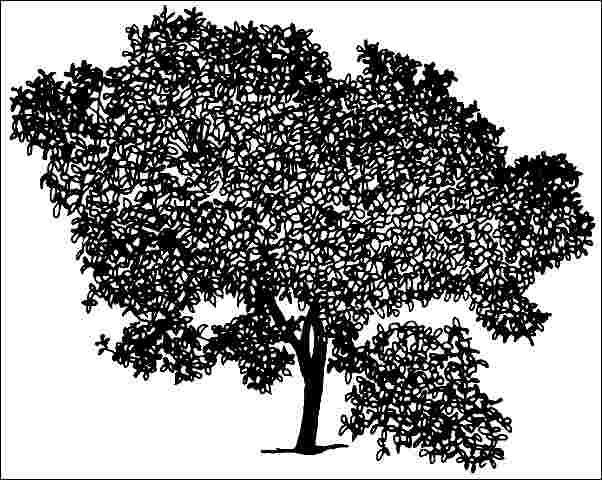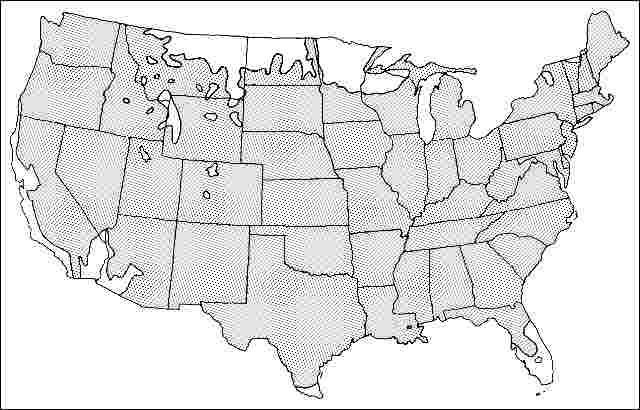Introduction
This cultivar of the deciduous North American native tree reaches 15 feet in height with a spread of 10 to 15 feet and forms a broad, rounded canopy over a slender, grey trunk. The trifoliate, four- to six-inch-long leaves emerge a bright yellow changing to light green in summer, turning yellow in fall before dropping. Inconspicuous greenish-white flowers appear in terminal clusters in June and July, their presence easily detected by the delicious orange blossom-like perfume. The blooms are followed by interesting, one-inch-diameter, flattened, tan "wafers" which will persist on the tree if not first consumed by wildlife. In the past, this bitter fruit was used as a substitute for hops in brewing beer.

Credit: UF/IFAS
General Information
Scientific name: Ptelea trifoliata
Pronunciation: TEE-lee-uh try-fole-ee-AY-tuh
Common name(s): 'Aurea' common hoptree, ‘Aurea' wafer-ash
Family: Rutaceae
USDA hardiness zones: 4A through 9A (Figure 2)
Origin: native to North America
Invasive potential: native cultivar
Uses: specimen; deck or patio; container or planter

Credit: UF/IFAS
Description
Height: 5 to 15 feet
Spread: 10 to 15 feet
Crown uniformity: irregular
Crown shape: round, vase
Crown density: moderate
Growth rate: moderate
Texture: medium
Foliage
Leaf arrangement: alternate (Figure 3)
Leaf type: trifoliate, odd-pinnately compound
Leaf margin: entire, serrate
Leaf shape: ovate, elliptic (oval), oblong
Leaf venation: brachidodrome, pinnate
Leaf type and persistence: deciduous
Leaf blade length: 2 to 4 inches
Leaf color: yellow, green
Fall color: yellow
Fall characteristic: showy

Credit: UF/IFAS
Flower
Flower color: white/cream/gray
Flower characteristics: not showy
Fruit
Fruit shape: round
Fruit length: 0.5 to 1 inch
Fruit covering: dry or hard
Fruit color: brown
Fruit characteristics: attracts squirrels/mammals; showy; fruit/leaves not a litter problem
Trunk and Branches
Trunk/bark/branches: branches droop; not showy; typically multi-trunked; thorns
Pruning requirement: needed for strong structure
Breakage: resistant
Current year twig color: brown
Current year twig thickness: medium
Wood specific gravity: unknown
Culture
Light requirement: full sun, partial sun or partial shade, shade tolerant
Soil tolerances: clay; sand; loam; acidic; slightly alkaline; well-drained
Drought tolerance: high
Aerosol salt tolerance: unknown
Other
Roots: not a problem
Winter interest: no
Outstanding tree: yes
Ozone sensitivity: unknown
Verticillium wilt susceptibility: unknown
Pest resistance: resistant to pests/diseases
Use and Management
One of a few small trees which performs well in deep shade. Plant it close to the patio or deck, or locate it in a shrub border for fragrant flowers and yellow fall color display. Its native habitat is dry, rocky upland sites making it well-suited for non-irrigated landscapes.
Naturally found in the shade along the edges of woods, especially on rocky slopes in the Mississippi Valley, wafer-ash can be planted in full sun to deep shade and prefers well-drained, fertile, moist soil. While plants are better off if not exposed to extremes of wetness or dryness, wafer-ash is drought-tolerant once established. Transplants readily from the field.
Other cultivars include: ‘Glauca' with blue/green foliage.
Propagation is by seed, budding, layering, or grafting.
Pests and Diseases
No pests or diseases are of major concern although it is occasionally bothered by tree-hoppers, leaf spot, and rust.